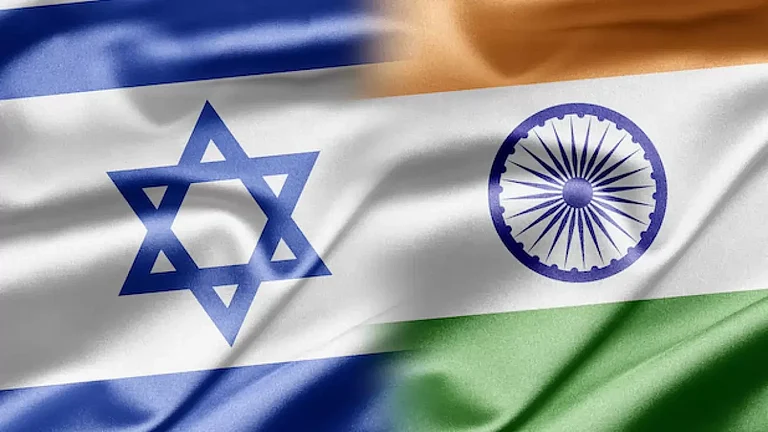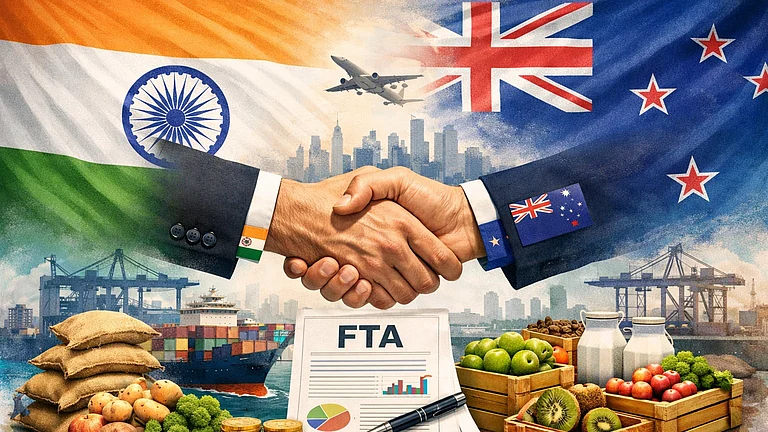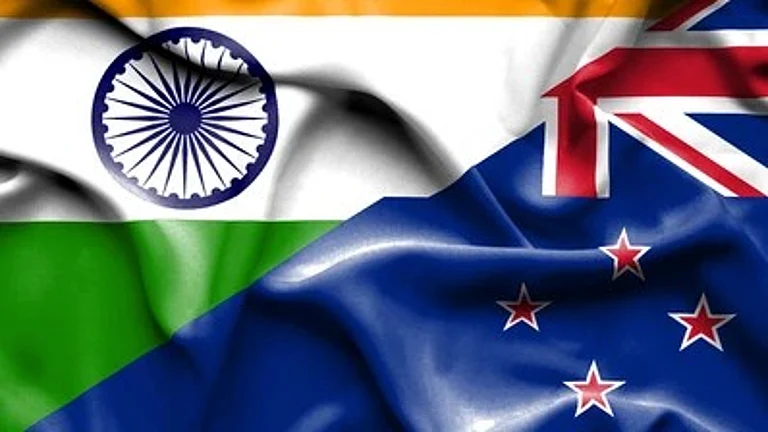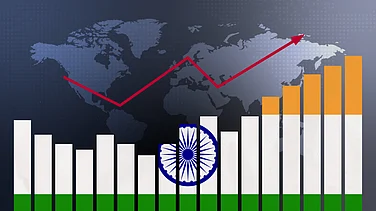Until there’s ink on a piece of paper, it’s fluid, a British negotiator had said early in the three-and-a-half years it took to confect Trexit. Now, 24 hours after India and the UK signed their ₹560.45 billion trade deal, the ink is not only on paper—it is dry, set and crackling with opportunity.
In an era defined by fractured global trade, rising tariffs and barefaced economic nationalism, India’s freshly minted trade pact with Britain is almost cathartic, purging the last remaining memories of the Raj and replacing it with a new reality. Commercially ambitious and politically calibrated, the deal is a sign that India is ready to reshape the rules of trade globalisation on its own terms. Also, it is a shot in the arm for Britain’s post-Brexit legitimacy.
Under the Comprehensive Economic and Trade Agreement the UK has agreed to eliminate tariffs on 99% of Indian product lines. India, in turn, will phase down its own duties on British goods such as luxury cars, Scotch whisky, cosmetics, medical devices and, notably, silver—the UK’s single largest export to India last fiscal year. While some of these reductions will unfold over a ten-year horizon, the symbolic and economic significance of the pact is immediate.
At a time when global trade is increasingly defined by suspicion, sanctions and strategic decoupling, this deal cuts against the grain. It offers India’s exporters a rare strategic foothold in a high-income, post-industrial economy, while giving Britain a trophy deal with a large, fast-growing market. The winners in India are clear: textile makers, engineering firms, seafood processors, and thousands of MSMEs now get frictionless access to a market they have long struggled to penetrate. But the gains are not merely mercantile. The agreement also eases restrictions on services and talent mobility, with Indian audit, accounting and consulting firms now able to operate in the UK under more liberalised terms. For a country that sees itself as a net exporter of skilled services and human capital, this is more than a footnote.
That the Indian government managed to secure these concessions without ceding ground on politically sensitive sectors—dairy, edible oils, apples, oats—speaks volumes not only about the country’s rising stature but also about the personal rapport between Commerce Minister Piyush Goyal and his British counterpart, Jonathan Reynolds, focused on building trust and relations.
As for India, gone is the defensive crouch that once defined its trade strategy. In its place is a targeted, transactional approach: open up where the gains are clear, hold firm where domestic turbulence threatens. This recalibrated posture marks a decisive shift from India’s RCEP withdrawal, which was framed at the time as a necessary retreat from an asymmetric and China-dominated agreement. Trexit is the comeback narrative—a deal that is as much about optics as economics.
For the UK, the agreement is a much-needed win. Seven years after the Brexit referendum, Britain has struggled to stitch together a coherent post-EU trade architecture. Deals with Australia, New Zealand and Japan have offered limited economic upside and scant political capital. India, by contrast, represents a bigger prize: a $3.7 trillion economy growing at over 6%, with a youthful consumer base and a rising appetite for high-quality imports. British Prime Minister Keir Starmer, keen to mark distance from his predecessors’ erratic trade diplomacy, has called the deal “the most economically significant” since Britain left the EU. He is not wrong.
Yet the success of Trexit will depend less on the number of duty-free items and more on execution. India’s ability to scale its exports, particularly from its fragmented MSME sector, will require concerted investment in logistics, standards compliance, and financing. Services trade, especially in law and audit, will demand clarity on licensing and mutual recognition. Consumer benefits—such as cheaper Scotch and Jaguars—will accrue disproportionately to the urban elite, raising questions about the distributive effects of liberalisation. And as always, the devil lies in implementation: bureaucratic delays, customs inefficiencies and opaque certification regimes have undone more than one ambitious trade pact before.
Still, the broader significance of Trexit cannot be overstated. It signals a shift in India’s trade doctrine—from hesitant multilateralist to confident, interest-driven bilateralist. It offers a model for how India might engage with the EU, Canada, or Australia, on equal footing, without sacrificing domestic priorities. And it puts paid to the notion that India is wedded to economic isolationism. With one foot still firmly in the Global South, and the other now edging towards high-income trade alliances, India is beginning to walk its own tightrope in the global economy.
For New Delhi, Trexit is not just about Scotch and silver. It is about leverage, legitimacy, and the long game. It is about using trade not as a passive function of global integration, but as an instrument of national strategy. If it works—and that remains a big if—it may become the template for how emerging powers do business in a world that no longer plays by the old rules.
(The author is the Editor, Special Projects at Outlook Business. The views expressed in this article are personal and do not represent the opinions or positions of Outlook Business.)

































